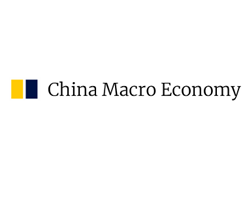China Turns to US Coal to Fill Void Created by Australia Import Ban, Offers Trade Deal Boost

By Su-Lin Tan
April 7, 2021 - Coking coal exports from the United States has filled some of the void created in China by its unofficial ban on Australian exports of the commodity over the past five months as trade manipulation creates “winners and losers”, economists said.
China blocked Australian coal imports in October amid a year-long political conflict, leaving many vessels stranded off its coast, before increasing imports from the US, South Africa and Colombia having previously relied mainly on the likes of Indonesia, Russia, Mongolia and Australia. Since the ban on Australia, China’s main coal suppliers have increased or maintained their exports to China.
And while only representing a small fraction of Australia’s pre-ban coal exports to China, the US sold nearly 300,000 tonnes of coking coal used in steel production to China in February from nearly zero in October, China customs data showed.
The imports of American coal, while helping fill the gap created by the Australian ban, also go towards China’s commitment to buy an additional US$52.4 billion worth of energy products from the US over two years as agreed as part of the phase one trade deal signed in January last year.
.png)
China has met 80 per cent of its energy purchase commitments with the US so far this year, according to an update by the Peterson Institute for International Economics’ senior fellow Chad Bown two weeks ago, although it hit only 39 per cent of the target in the first year of the deal in 2020.
It is not the first time the US has reached similar levels of coal exports to China, although Chinese purchases of American coal have tended to be more volatile and irregular over the past few years.
In contrast, Australia’s total exports of both coking and thermal coal – used for power generation – fell from 2.5 million tonnes in October to zero since December.
Before the ban, Australia was regularly averaging between 6 million tonnes and 7 million tonnes of both thermal and coking coal exports to China.
During its full year results presentation last month, American coal company Warrior Met Coal explained how the ban on Australian coal had created opportunities for American coal miners.
When the ban kicked in, many Chinese customers rushed to secure the limited supply of non-Australian premium coal and in turn Australian supply which was normally reserved for China was offered to alternative markets in Europe and South America, Warrior Met Coal chief executive Walter Scheller said.
“We were able to successfully attract new Chinese customers during the fourth quarter, which partially offset some of the impact of the depressed pricing environment experienced in our natural markets,” he said.
Australia’s loss has created new gains for the US, analysts said.
“After all, this import ban paved the way for various brands of US coals to make their way into China, something that wouldn’t have been possible if Australian coals were still being sold into China,” commodity and energy price agency Argus Media senior analyst Lee Rou Urn said.
“That said, US coking coal still pales in comparison to Australian coking coal in various ways, quality, consistency of specs, as well as its considerably small output which will in no way be close to meeting the kind of volumes that Australia can export to China in the old days.”
The ban on Australian coal has led to new trade patterns in China. Due to a shortage of high-quality coal - usually from Australia - Chinese steel mills have also been forced to adapt to lower quality local coal, through more product blending to increase performance, Lee said.
“Yes it is true that China is short on coking coal at the moment, but they’re dealing with it as best they can, be it by tweaking their blends to use more domestic coal or by taking as much suitable material from the US and Canada as possible in the meantime,” he added.
China has, so far, managed to ramp up its local coal production in the absence of Australia imports, helped by volatile and sometimes lower, coal demand at steel mills in the past year for example, when hit by coronavirus lockdowns, Navigate Commodities managing director Atilla Widnell said.
But China faces some new challenges with coal he added, citing border restrictions on exports from its other big coking coal supplier, Mongolia, particularly after a coronavirus case was found at a mine in recent weeks.
“Chinese blast furnaces have raised capacity utilisation rates through March and restrictions on import availability poses a real problem going forward,” Widnell said.
“If the situation is not brought under control sooner rather than later, this might be the ‘straw that breaks the camel’s back’ with respect to opening the gates to Australian coking coal.”
China’s move against Australia coal was part of an ongoing diplomatic dispute between Canberra and Beijing triggered when Australia pushed for an international inquiry into the origins of the coronavirus. It also led to bans on Australian lobsters, wine, log timber, sugar and barley last year.
“It goes to show that managed trade is a lose-lose for everyone concerned,” Stephen Kirchner, programme director for trade and investment at the University of Sydney’s United States Studies Centre said.

